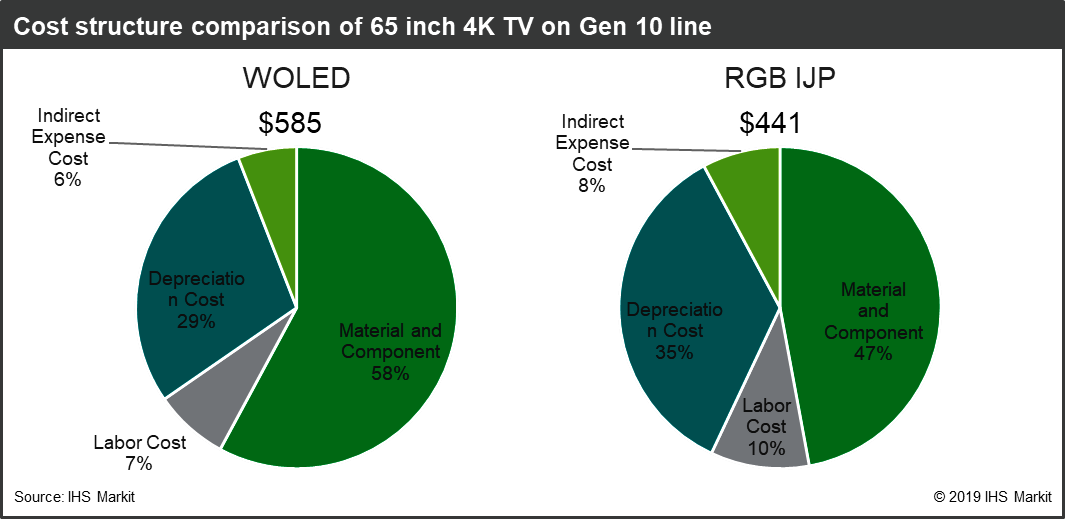The price of OLED televisions could soon come tumbling down as display makers race to finalize their Inkjet Printing manufacturing processes, which many experts believe will significantly lower their production costs.

Most readers will be aware that large OLED TVs are very expensive, with even the cheapest models starting at around £3,000 or more. There’s a good reason for this, because manufacturing OLED displays using traditional techniques is very costly indeed.
Companies such as LG for example use what’s called a White OLED (WOLED) method that uses repeating arrays of patterned green, red, and blue subpixels placed on a fine metal mask to get an RGB coating of the organic materials. The process works well enough, but it’s also somewhat inefficient in terms of scalability, efficiency, and performance, resulting in higher costs than LCD display manufacturing, for example.
Inkject printing promises to change all that. Inkjet refers to a form of computer printing that’s normally used to recreate a digital image by propelling droplets of ink onto paper, plastic and other substrates. But the process can also be applied to TV displays, and manufacturers from China, Japan and South Korea are reportedly racing to perfect the technique in order to try and drive down production costs.
Now, IHS Markit says they’re getting close. In its newly published Inkjet Printing for AMOLED Technology and Market Report 2019, the analyst firm says the technology is all set to enter mass production next year. Further, it says capacity will increase by up to 12-fold from 2020 to 2024, with an estimated 1.3 million substrates expected to be produced by that year.
Taking an early lead in the race is JOLED Inc., a joint venture firm created by Japan Display, Panasonic and Sony, which has been testing the Inkjet process for some time already and will begin mass production next year, IHS Markit said. The company showed off several Inkjet-printed OLED panels at the Finetech Japan 2018 event in Chiba City last December, including a 4K TV panel sporting a 120Hz refresh rate that’s capable of reproducing full DCI-P3 colour. It also demonstrated various computer screens and smaller displays built using the Inkjet process.
IHS Markit said that Chinese display makers are not far behind JOLED, and several of them should also begin mass production by 2021. It didn’t mention any names, but TCL was previously reported to be experimenting with Inkjet Printing.
Chinese firms are said to have big motivation to accelerate their investments in Inkjet Printing because not only does it fit with Beijing’s long-term national strategies, but it also gives them a way to diversify from the heavily oversupplied LCD market, IHS Markit said.
More important for consumers though is the cost-savings to be had. IHS Markit in its report suggests Inkjet Printing could reduce the cost of manufacturing OLED displays by as much as 15% to 25% compared to the conventional WOLED method used by LG. Inkjet printing also requires less startup costs, and results in less materials wastage, further reducing the overall cost of making the panels.
“In recent years, InkJet Printing has attracted the attention of panel makers due to its strong potential to reduce the cost of OLED production,” Chase Li, a senior analyst at IHS Markit, said in a statement. “Despite years of competition with LCDs in the market for high-end displays of all sizes, OLED market penetration remains limited because of its expensive production costs. However, InkJet printing has the potential to dramatically reduce manufacturing expenses, making OLEDs more cost-competitive with LCDs in products including televisions and displays for computers and tablets.”